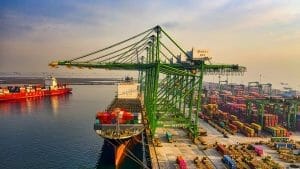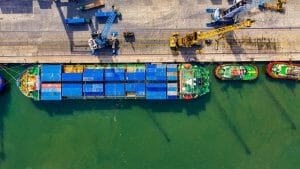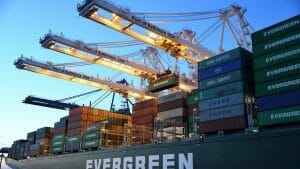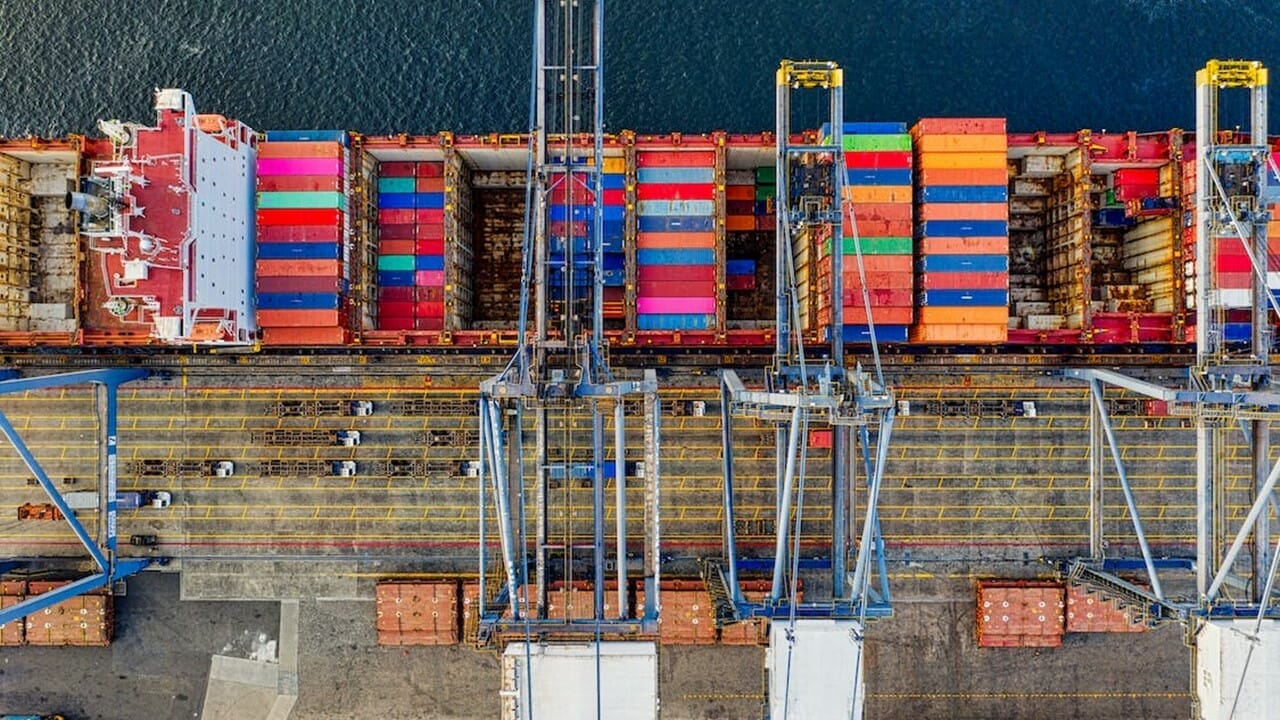Port operations and vessel crews are the backbone of global trade, managing the efficient flow of goods across vast oceans. In this fast-paced industry, where every minute counts, ensuring the safety and expertise of crew members is paramount. Traditionally, training for port operations and vessel crews has relied on real-life simulations or classroom instruction, but now a new technology is revolutionizing the way these essential skills are acquired: virtual reality (VR). With its immersive capabilities and realistic scenarios, VR has emerged as a game-changer in preparing crew members for the challenges they may face at sea. From navigating treacherous waters to handling emergency situations with precision, VR offers an unparalleled training experience that not only enhances safety but also boosts efficiency in port operations.
Overview of VR technology in port operations
Port operations are a critical part of global trade, and any inefficiencies or errors can have significant impacts on supply chains. Virtual reality (VR) technology is proving to be a game-changer in this sector, offering a range of benefits for port operators and vessel crews. One key application is in training and simulation, where VR can provide realistic and immersive environments that allow workers to practice their skills without the need for real-world equipment or risk of safety hazards. This not only saves costs but also allows for more frequent and effective training sessions.
Another advantage of VR in port operations is its ability to facilitate remote collaboration. With the use of VR headsets, team members situated at different locations can come together virtually to discuss plans, review documents, and make decisions in real time. This eliminates the need for travel or face-to-face meetings while still ensuring effective communication among team members. Additionally, VR technology enables port operators to analyze data more efficiently by visualizing it in three-dimensional space. This enhances decision-making processes by providing a better understanding of complex information such as cargo loadings, container placements, and navigation routes.
Overall, incorporating VR technology into port operations is revolutionizing the industry by improving training efficiency, fostering remote collaboration, and enhancing data analysis capabilities. As this technology continues to evolve, it offers even more possibilities for optimizing processes and increasing operational excellence within the maritime sector. Port operators who embrace these advancements will undoubtedly gain a competitive edge in managing their facilities effectively while delivering exceptional service to ship crews and customers alike.

Benefits of VR in port operations
Virtual Reality (VR) is revolutionizing the way port operations are conducted, bringing numerous benefits to both operators and vessel crews. One major advantage of using VR in port operations is enhanced training. Traditionally, new crew members had to rely on manuals and theoretical lessons to learn their tasks. However, VR enables them to immerse themselves in realistic scenarios, allowing for hands-on experience without the inherent risks involved in actual port operations. This not only increases safety but also reduces learning time and improves crew performance.
Additionally, VR technology can significantly improve efficiency and accuracy in cargo handling. By using virtual simulations, operators can visualize the entire process of loading/unloading containers onboard a vessel or moving cargo within a terminal. They can identify potential bottlenecks beforehand and optimize workflows accordingly. Furthermore, VR allows for analyzing different factors that impact efficiency, such as space utilization or equipment placement, helping to streamline port operations and reduce costs.
By incorporating VR into training sessions and everyday operations, ports stand to enhance safety measures while maximizing productivity. As technology continues to advance rapidly, it is crucial for ports worldwide to embrace these cutting-edge tools if they wish to remain competitive in an ever-evolving industry. The adoption of VR can indeed offer a gateway into improved operational outcomes that will shape the future of port activities for years to come.

Enhancing safety with VR training simulations
One of the most pressing concerns in any industry involving dangerous or high-risk work is safety. In port operations and vessel crews, where workers often find themselves in hazardous environments and face potential accidents, ensuring their safety becomes paramount. This is where virtual reality (VR) training simulations can be highly beneficial.
Unlike traditional training methods, such as classroom lectures or on-the-job training, VR simulations provide a realistic and immersive learning experience that allows employees to practice safety protocols in a controlled environment. For example, crew members can simulate emergency situations like fires or man overboard scenarios without putting themselves at risk. They can learn how to respond effectively and efficiently to these situations by interacting with virtual objects and making decisions in real time.
Not only do VR training simulations enhance safety by allowing for realistic practice scenarios, but they also eliminate the potential consequences of real-life errors. Mistakes made during VR training have no actual impact on people or property, unlike mistakes made during live exercises. This means that employees can learn from their errors without anyone getting hurt or anything being damaged. Moreover, because VR simulations are repeatable and customizable, individuals can continue practicing until they master the necessary skills for handling various emergencies.
By implementing VR training simulations in port operations and vessel crews’ safety programs, companies can significantly reduce workplace accidents and injuries. Not only does this improve employee well-being but it also reduces downtime caused by accidents on ships or at ports.

Improving efficiency through virtual planning and visualization
With the advancement of virtual reality (VR) technology, port operations, and vessel crews can greatly benefit from virtual planning and visualization to improve efficiency. One significant advantage is the ability to simulate and plan complex operations in a virtual environment before executing them in real life. This allows for better coordination among different teams involved in port operations, such as ship captains, crane operators, and terminal workers. By visualizing the entire process beforehand, potential bottlenecks or inefficiencies can be identified and addressed proactively.
Furthermore, VR can play a crucial role in training vessel crews for tugboats, deck barges, cargo ships, and luxury yachts. Traditionally, crew members needed extensive hands-on experience to acquire the necessary skills for their specific job roles. However, with VR simulations, they can gain practical knowledge without risking any damage to equipment or endangering personnel safety. For example, ship engineers can familiarize themselves with various machinery components virtually before working on them physically. This not only saves time but also enhances crew competence by providing realistic scenarios that challenge their problem-solving skills.
In addition to planning and training benefits, utilizing VR in port operations allows for remote collaboration among different stakeholders. Decision-making processes within the industry often involve multiple parties based at different locations who need to coordinate their efforts effectively. Through virtual planning and visualization tools like 3D models or interactive maps, all stakeholders can come together virtually regardless of physical distance. This facilitates efficient communication by providing a common platform where everyone involved can assess information simultaneously and make informed decisions collectively.

Enhancing communication and collaboration among vessel crews
One of the key challenges faced by vessel crews in port operations is effectively communicating and collaborating with each other. This is especially crucial in high-pressure situations where speedy decision-making and clear instructions are essential for smooth operations. Fortunately, the advent of virtual reality (VR) technology offers new possibilities to enhance communication and collaboration among vessel crews.
By using VR simulations, crew members can be immersed in realistic scenarios that mimic real-life port operations. This allows them to experience firsthand the challenges they may encounter and practice how to effectively communicate and collaborate in such situations. For example, they can simulate emergency drills or complex maneuvering tasks, where crew members must work together seamlessly to achieve a safe outcome. Such immersive experiences not only provide valuable training but also foster trust among team members, as they learn how to rely on each other’s strengths, communicate clearly, and coordinate their efforts.
Furthermore, VR can bridge geographical gaps that often hinder effective communication among vessel crews. In today’s global shipping industry, crew members come from diverse backgrounds and may not have a shared language or cultural values. Through VR applications with built-in translation features or intuitive icons representing different tasks or equipment procedures, barriers caused by language differences can be overcome more easily. This not only improves efficiency but also promotes understanding and cooperation among crew members from various nationalities.
Utilizing virtual reality technology holds great potential for enhancing communication and collaboration among vessel crews in port operations.

Overcoming challenges and limitations of VR in port operations
As virtual reality (VR) technology continues to gain traction in various industries, port operations and vessel crews are also embracing the potential benefits it offers. VR has the ability to simulate realistic training scenarios, help improve safety protocols, and enhance operational efficiency. However, like any emerging technology, VR in port operations comes with its own set of challenges and limitations that need to be addressed for widespread adoption.
One of the main challenges is the high initial cost of implementing VR solutions. From acquiring hardware such as headsets and controllers to developing custom software tailored for port operations, the financial investment can be significant. Additionally, maintaining and regularly updating the system requires ongoing expenses. However, as technology advances and costs decrease over time, this challenge could become less significant.
Another limitation is ensuring compatibility with existing systems and infrastructure at ports. Integrating VR solutions into an already established environment may require additional modifications or upgrades which can disrupt regular operations temporarily. It is crucial for port authorities to ensure a seamless transition so that employees can adapt easily without encountering any hindrances or technical difficulties.
Despite these challenges and limitations, VR holds great promise in revolutionizing how port operations are conducted by providing immersive training experiences and improved safety protocols. By finding ways to overcome barriers such as cost investment and integration hurdles, industry leaders can unlock the full potential of VR technology in enhancing efficiency within port operations while ensuring a safer working environment for their employees. With continued advancements in this field, we can expect exciting developments in how virtual reality enhances productivity within ports worldwide.

Summary: Using VR in Port Operations and Vessel Crews
In conclusion, the use of virtual reality (VR) in port operations and vessel crews has proven to be a game-changer in several aspects. Firstly, VR offers realistic and immersive training experiences for crew members, allowing them to practice navigating vessels through complex scenarios without putting themselves or the ship at risk. This not only enhances their skills but also boosts their confidence and preparedness to handle challenging situations.
Additionally, VR can revolutionize port operations by streamlining processes and increasing efficiency. Through simulations, port operators can optimize cargo handling techniques, examine potential hazards, and even test different layouts of equipment and infrastructure. This allows for better planning and decision-making, ultimately reducing downtime and maximizing productivity.
Furthermore, incorporating VR technology into port operations has the potential to bridge geographical gaps between vessels during emergencies or repairs. Crew members can remotely access real-time data through virtual means, enabling them to provide prompt assistance or guidance from shore-based experts. This improves communication efficiency while minimizing delays or costly mistakes that could arise from miscommunication.
Overall, utilizing VR in both port operations and vessel crews is a leap forward towards safer practices, smoother logistics management, enhanced training methods, streamlined communication channels, and ultimately more efficient maritime industry as a whole. The benefits of this ever-evolving technology are vast; it is up to organizations within the sector to embrace its potential fully and seize the opportunities it presents for growth in an increasingly demanding global market.









